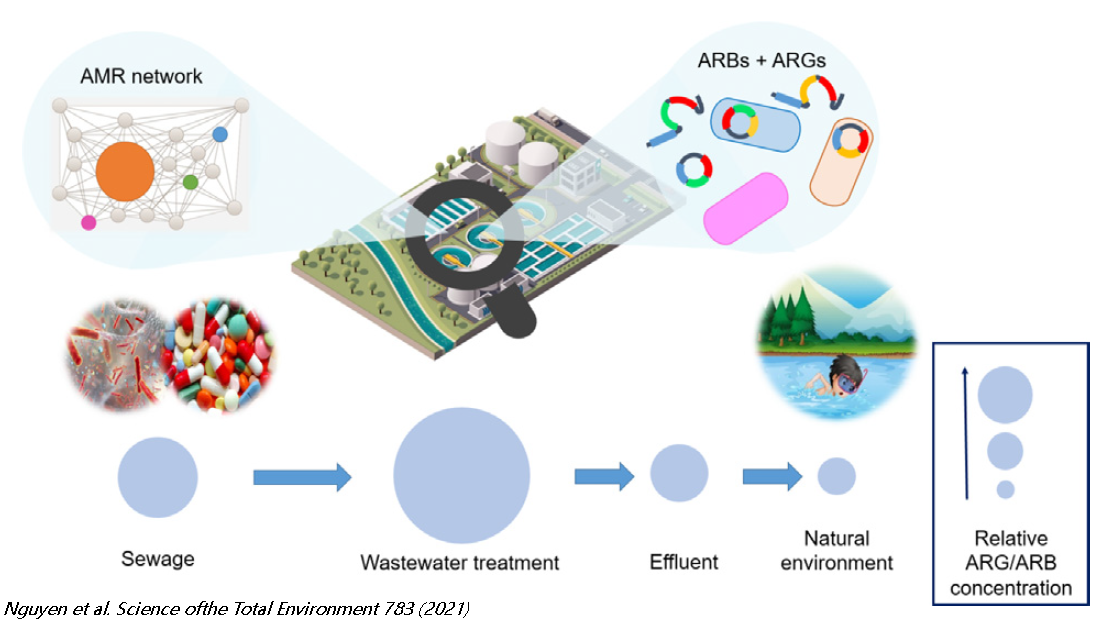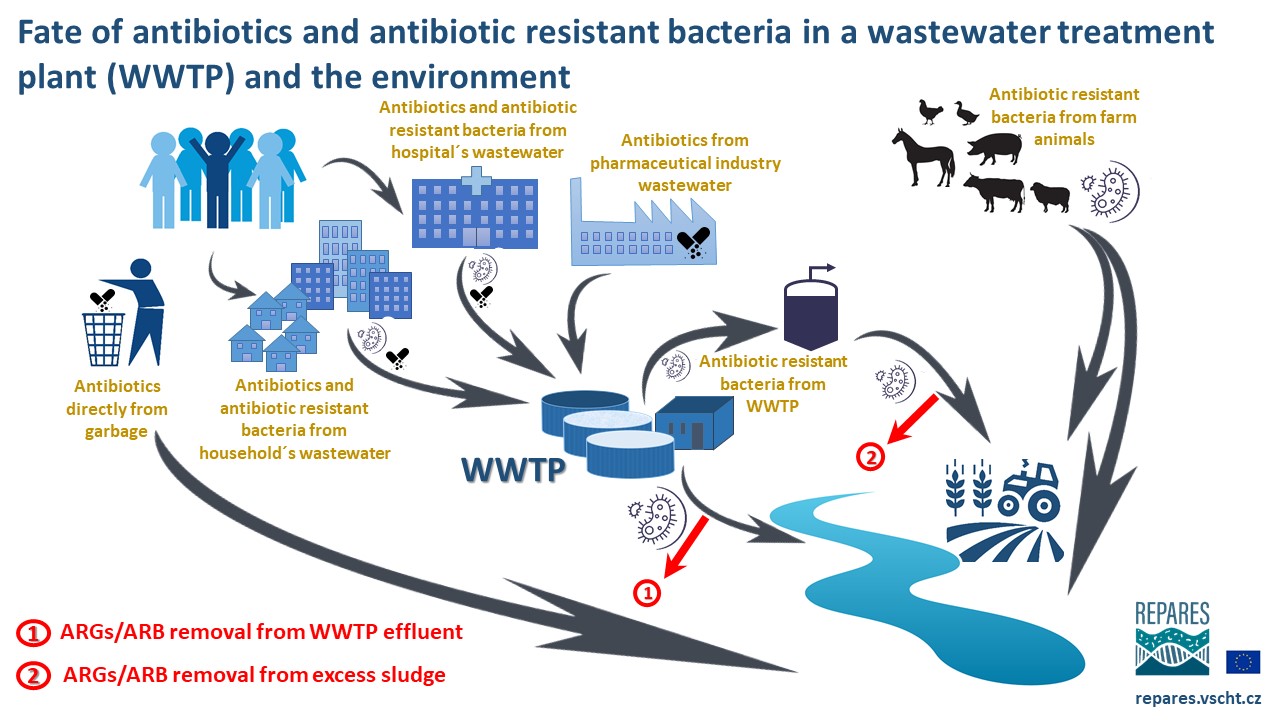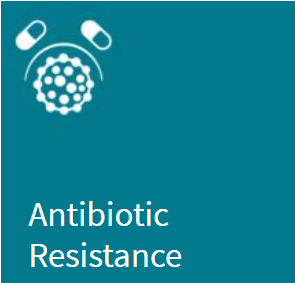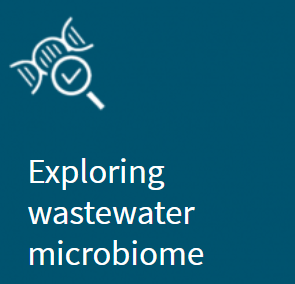The vast majority of antibiotic-resistant bacteria (ARB) develop in the bodies of antibiotic-treated patients (human or animal) and are later excreted in feces and urine into sewage. Municipal, hospital, industrial, and (sometimes) agricultural wastewaters are collected and treated in wastewater treatment plants (WWTPs), where the presence of diverse selection pressures together with a highly concentrated consortium of pathogenic microbes create favorable conditions for further transfer of antibiotic resistance genes (ARGs) and proliferation of ARB. The rapid emergence of antibiotic-resistant pathogens of clinical and veterinary significance over the past 80 years has redefined the role of WWTPs as a focal point in the fight against antimicrobial resistance (AMR). Wastewater treatment is a double-edged sword that can act as either a pathway for AMR spread or as a barrier to reduce the environmental release of anthropogenic AMR.

If properly designed and operated, current wastewater treatment processes such as activated sludge process (AS), membrane bioreactors (MBRs), biofilters (BFs), or constructed wetlands (CWs) can efficiently stop both ARGs and ARB from entering WWTP's effluent under the condition that bacteria are sufficiently retained inside the WWTP. Therefore, technologies with highly efficient biomass retention (e.g. MBR) are most efficient in ARG/ARB removal. Even then, extracellular DNA (or mobile genetic elements - MGE) can escape to recipents (rivers, lakes, oceans, or groundwater). To fully remove ArRGs and ARB from WWTPs' effluents, tertiary treatment with advanced techniques such as UV irradiation, ozonation, Fenton reaction, or photocatalysis is required.

Furthermore, ARGs and ARB accumulate in the excess activated sludge (microbial biomass growing as a result of biological wastewater treatment) and must be destroyed before its further utilization. Most of the waste sludge is first subjected to anaerobic digestion and then utilized for energy production (incineration, gasification, etc.) or in agriculture as fertilizer. In the latter case, sludge hygienization such as pasteurization, drying, liming or thermal hydrolysis, may help to remove ARGs/ARB.


